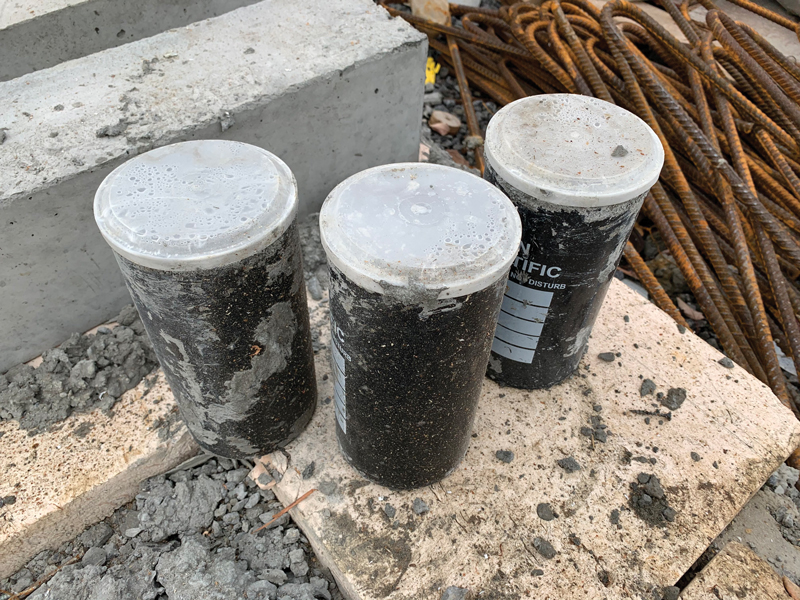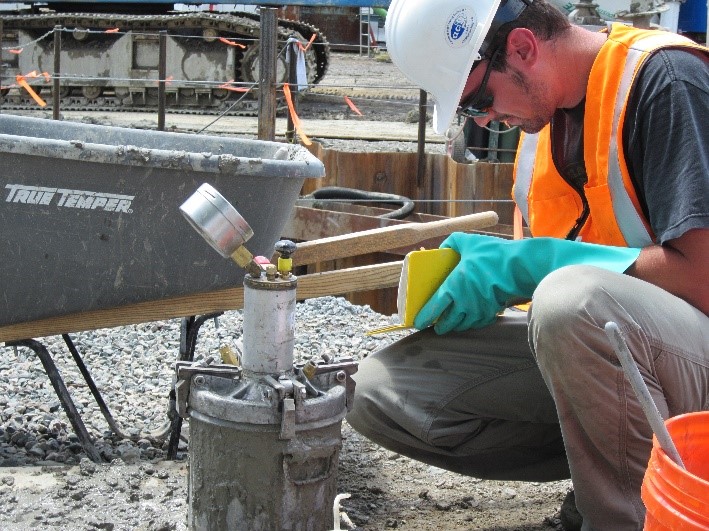Strategic Solutions for Concrete Testing Near Me: Precision in Every Example
Putting Concrete to the Test: Revealing the Secrets of Material Strength
Concrete is an ubiquitous product that creates the structure of our developed atmosphere, sustaining structures both grand and humble. Regardless of its extensive use, the secrets of concrete's impressive toughness stay greatly concealed. Comprehending the elements that add to concrete's durability and discovering ingenious testing approaches are important steps in opening its full potential. In this conversation, we will delve right into the structure of concrete, the factors that affect its toughness, and the innovative strategies used to measure and enhance its efficiency. From the old Roman structures to the skyscrapers of the modern-day era, the research of concrete's tricks assures to introduce a world of possibilities for the future of construction.
The Composition of Concrete
Concrete is a composite material consisting of a mixture of cement, water, accumulations, and often various other ingredients. This mix gives concrete with its one-of-a-kind properties, consisting of sturdiness, flexibility, and strength.
The dimension and shape of the accumulations can influence the workability and toughness of the concrete. These additives can enhance the workability, reduce the water web content, boost the strength, or boost the resilience of the concrete.
Recognizing the composition of concrete is critical for engineers and building and construction professionals to create and build frameworks that fulfill details performance demands. By carefully choosing the kind and percentage of each ingredient, the preferred toughness and resilience of the concrete can be attained. In addition, developments in product scientific research remain to explore new additives and combinations that can further enhance the buildings of concrete, making it a much more flexible and trustworthy building material.
Elements Affecting Concrete Toughness

One more considerable aspect is the high quality and kind of cement utilized. Different kinds of concrete have differing chemical make-ups, which can affect the stamina of the resulting concrete. Furthermore, the size and shape of aggregates used in the mix can influence concrete toughness. Well-graded aggregates with a series of sizes ensure better packaging, causing higher strength - concrete testing near me.

Other elements that affect concrete toughness consist of making use of admixtures, such as plasticizers or accelerators, the addition of supplemental cementitious products, and the presence of contaminations or impurities in the raw materials.
Evaluating Methods for Concrete Toughness
One frequently utilized method for reviewing the stamina of concrete is through the application of various screening methods. These testing approaches are important in identifying the quality and longevity of concrete structures. Among one of the most widely used strategies is the compressive stamina test, which gauges the maximum lots a concrete sample can hold up against before it falls short. This examination involves applying a gradually boosting load to a round or cubical sampling until it fractures.
One more vital testing technique is the flexural toughness test, which examines the capacity of concrete to resist bending pressures. This examination involves subjecting a beam-shaped concrete specimen to a progressively increasing load up until it reaches its maximum flexing ability. By measuring the load and deflection at failing, designers can establish the flexural strength of the concrete.
Along with these examinations, there are various Check This Out other techniques available for examining concrete toughness, such as the split tensile toughness examination, the pull-off test, and the ultrasonic pulse velocity examination. The split tensile toughness test measures the capacity of concrete to resist tensile pressures, while the pull-off examination assesses the bond toughness between the concrete and various other products. The ultrasonic pulse velocity test uses acoustic waves to figure out the quality and uniformity of concrete.
Enhancing Concrete Longevity
One approach is to make use of top notch materials throughout the concrete production process. In addition, integrating additional cementitious products such as fly ash or slag can improve the concrete's resistance to chemical attack and reduce leaks in the structure.

Moreover, effective healing techniques play a crucial function in enhancing concrete longevity. Curing entails maintaining ample wetness and temperature level conditions for the concrete to effectively moisturize and gain stamina. This procedure assists avoid cracking, surface issues, and improves total resilience.
Future Technologies in Concrete Technology
In the world of concrete modern technology, developments on the perspective promise to reinvent the market and redefine the possibilities of building and construction. Researchers and designers are regularly aiming to create innovative methods and products that can enhance the performance and sustainability of concrete.
One of the future advancements in concrete modern technology is the usage of self-healing concrete. Bacteria installed in the concrete are triggered upon fracture formation, producing limestone to fill the gaps and restore the architectural honesty of the product.
An additional location of advancement is the use of nanotechnology in concrete production. Nanomaterials, such as carbon nanotubes and graphene, can be included to concrete to boost its mechanical properties. These products have high toughness and conductivity, enhancing the toughness and efficiency of the concrete - concrete testing near me. Furthermore, nanotechnology can be used to create self-cleaning concrete, which lowers the requirement for regular upkeep and cleansing.
Furthermore, scientists are checking out the use of 3D printing modern technology in concrete building. This technique permits for the reliable and accurate fabrication of complicated structures, minimizing material wastefulness and construction time. It additionally opens up brand-new possibilities for building design and personalization.
These future technologies in concrete innovation have the potential to revolutionize the building market, making it a lot more sustainable, reliable, and cost-efficient. With continuous r & d, we can anticipate to see these developments come to be a reality in the close to future.
Verdict
Finally, recognizing the composition of concrete and the elements that influence its stamina is click now essential for enhancing its longevity. Various testing approaches can be used to accurately determine concrete stamina, giving valuable insights for building tasks. As innovation remains to advance, future developments in concrete innovation hold the possible to better enhance the strength and sturdiness of this necessary building and construction product.
In enhancement to these tests, there are various other strategies available for evaluating concrete stamina, such as the split tensile toughness test, the pull-off test, and the ultrasonic pulse speed examination. The split tensile toughness examination measures the ability of concrete to withstand tensile pressures, while dig this the pull-off examination assesses the bond stamina in between the concrete and various other products.One of the future innovations in concrete technology is the use of self-healing concrete. These materials have high stamina and conductivity, enhancing the longevity and efficiency of the concrete. As technology continues to advance, future developments in concrete modern technology hold the possible to better boost the toughness and durability of this important construction material.